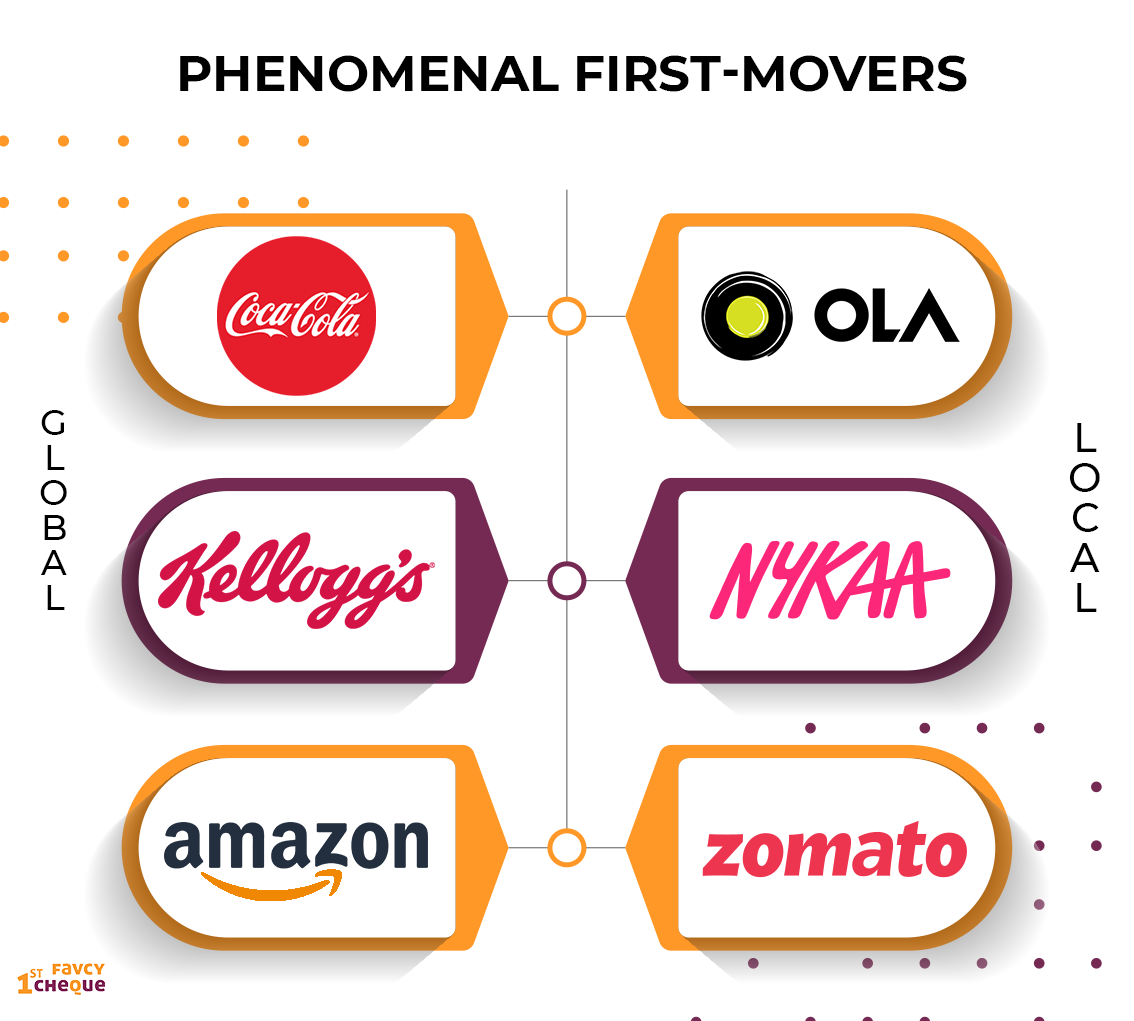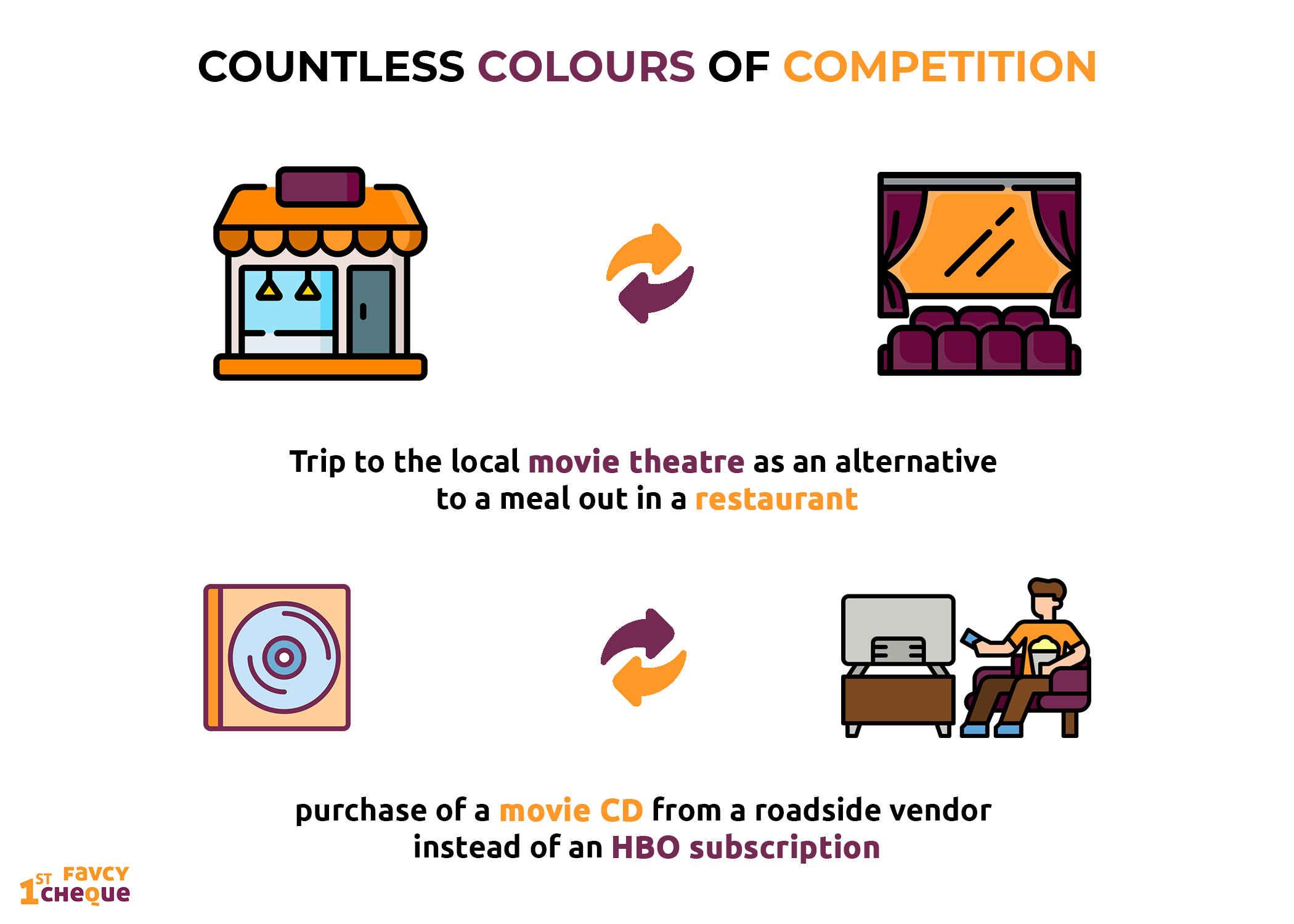
Do you fancy a game of chess? The Dynamics of the First-Mover Advantage
.png)
Strategy! Strategy! Strategy! Isn’t that what chess is all about? And history has been witness to the fact that strategic openings can phenomenally alter the course of the entire game!
Investing is a lot like chess if you think about it. Every move has a consequence. The smarter your moves are, the higher your chances of winning. And a good opening move can make or break your A-game.

Welcome! Today we are going to dig into the mechanics of the first-mover advantage.
Even if you are not aware of the term ‘first mover advantage’, you must be aware of companies that used the first-mover advantage to the utmost benefit. Coca-Cola, Amazon, and Kellogg's - to name a few. But even closer to home - we have Ola, Nykaa, and Zomato.

So, what exactly is the first-mover advantage?
The term "first-mover advantage" refers to firms that are the first to market, giving them a competitive edge over other companies, resources, or innovations that come after them. First movers typically receive brand leadership and devotion, but they must continue to adapt to avoid being eclipsed by competitors.
However, it is vital to highlight that the first-mover advantage only applies to corporations that enter a market and make it big. Amazon, for example, was not the first firm to sell books online. Ola was not the first company that allowed you to book taxis through your phone. They were, nevertheless, the first companies to acquire considerable size in their respective industries.
Companies that are first movers can often:
-
Establish their product as the industry standard.
-
Be able to tap into consumers first and make a strong impression, which can lead to brand recognition and brand loyalty.
-
They may be able to manage resources by locating in a strategic area, creating a premium contract with essential suppliers, or acquiring skilled personnel.
-
Gain an edge when there is a high switching cost for customers to move to later entrants.
Technically, it can be considered the holy grail for new companies! How?
A company that has the first-mover advantage in its vertical can become a leader in new technology, knowledge sharing, and cost. Furthermore, patents and copyrights can ensure certain of these advantages are untouchable by future competitors.
First movers also have the gift of capturing consumer attention, mindshare, and brand loyalty before competitors arise.
But it is not as easy as it seems
When does first-mover advantage actually work?
First-mover advantage works best for a company when the benefits are evident in competitive advantages in the industry. This includes businesses where learning is important, such as sophisticated manufacturing of items like airplanes or pharmaceuticals. Because the complexity necessitates large expenditures, learning gains frequently translate into scale. Because scale allows corporations to distribute fixed costs over multiple units, a competitor must be able to bridge the learning gap and compete on the scale to gain market share.
It is not always sunny in the first move land! When does first-mover advantage not work?
In today’s fast-paced life, the first-mover advantage has limits, and its shelf life may be getting shorter and shorter. The two forces that erase first-mover advantage are market evolution and technological evolution. It is undeniable that as we progress, innovation becomes harder and harder.
But we always hear entrepreneurs throw around the words ‘We’ve got the first-mover advantage! We barely have any competitors………’
The fact of the matter is that Google has entrepreneurs convinced that this is exactly what investors want to hear! But to actually have the first-mover advantage your product or service needs to cause an industry breakthrough and multiple factors come into play to make this happen!
Not only that, it is impossible to not have competitors. Everyone who has a business has competition. Period. If you don’t have competition, you don’t have a market! You may be a first-mover, but you are moving into a void space filled with the sound of crickets.
Every product or service must solve a customer’s problem. Your competition might be in the form of substitute products that solve the problem differently or accomplish something similar to your product. Or it may exist in the form of alternatives, such as a trip to the local movie theatre as an alternative to a meal out in a restaurant, or the purchase of a movie CD from a roadside vendor instead of an HBO subscription.

This brings us to an important question -
What does it truly take to become a first mover and gain advantage from it?
Firstly, you’ve got to be the first or at least very early into a market. It might be a brand new market, or it might be a disruption of an existing market causing a new niche. But needless to say, some “first-ness” is a prerequisite.
This is not as simple as it seems since the burden of educating the market rests entirely on the first-mover, who must invest a disproportionate amount of time and money in winning mindshare, teaching customers, and producing demand.
And there's always the risk that you're completely incorrect and the market never materializes.
Secondly, you need to very quickly capture a huge percentage of that market. You need to grow at a breakneck pace while you are still hot and there is less organized and effective competition.
Third, you need to come up with some method to protect all that market share. Some form of the classic economic concept of high-switching costs. The biggest example of this is the case of Facebook!
So there lies my dead facebook account. I barely post anything on these days. But I cannot, for the love of God, convince myself to delete the account. The high switching costs would be all the school and college friends, updates, photos, and data that I have collected on the system shall become dust!
In case it is not obvious, businesses with high switching costs are not that easy to build, especially in today’s internet-centric world where your competitors’ products are just a quick Google search away.
And the fourth and last detail you must pay attention to is to never pause the innovation. Even if you gain a considerable market share, there are always companies out there trying to outdo whatever you are doing.
What’s in it for angel investors?
Hypothetically speaking, a first-mover company that has got its basics right can turn out to be the home-run you have been waiting for your whole life! But it is natural that a company needs a lot more than just a first-mover advantage. It is true that there are advantages to being the first entrant to a new market or the first to bring a new product or service to market. However, many times, the second or third entrant wins the war!
Take a look at Apple, it did not create the MP3 player or the first cell phone. It dominates both product categories today. Blackberry was the phone of choice for business class in Y2K. But whose stock would you have rather bought and held since then?
Seed investors have a lot to gain if the first-mover company makes it through all the turbulence. After that, the sky is limitless. But the question is, how willing are you to take off with baby wings?
Check, mate!
Angel investors and entrepreneurs alike must be smart when it comes to first-mover companies. Investors must not invest without the proper market research and entrepreneurs must not claim their company to be a first-mover without knowing the logistics behind it.
It is safe to say that while gaining a first mover’s advantage isn’t impossible, it’s just much more difficult, rare, and expensive than most people realize. It does exist. And it can be a heck of a wave to surf if you are lucky enough to catch it.